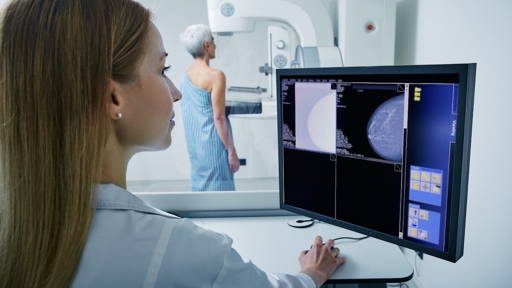An innovative ultrasound device developed by the BrainEcho Lab at Erasmus MC in the Netherlands makes it possible to monitor brain activity in great detail and in real time, even while a patient is walking. This groundbreaking research, led by neuroscientist Pieter Kruizinga and AIOS neurosurgery Sadaf Soloukey, shows that the device can measure brain activity at a speed of 10,000 images per second.
Whereas brain research normally takes place in a static MRI scanner, this new technique literally brings movement into the picture. Thanks to a custom-made helmet with a holder for the echo probe, brain activity could be recorded for the first time in a walking patient.
Special plastic
PEEK (polyetheretherketone) was used for this purpose, a plastic that is sometimes used after brain surgery to replace the original skull bone. The unique property of PEEK is that it hardly obstructs ultrasound, unlike the dense structure of a human skull.
“This discovery is an absolute breakthrough. It opens the door to brain research during natural movements and even during rehabilitation. We can now monitor brain activity like never before,” says Soloukey. The findings were recently published in Science Advances.
Clinical and scientific impact
The application of this technique extends beyond research. During brain surgery, the device provides surgeons with valuable information about blood flow in the brain tissue. Since active brain areas require more blood, surgeons can see more accurately which areas are vital and which can be removed without damage. However, the technique has not yet been approved for direct intraoperative decision-making. “We need to be absolutely certain that the image is accurate. This requires follow-up studies,” emphasizes Kruizinga.
The technique also offers opportunities postoperatively. Because brains with a PEEK closure remain easily accessible for ultrasound, a new method of long-term monitoring is emerging. Instead of periodic MRI scans that can take weeks and produce unclear results, this technique could potentially be used directly in the consultation room. “That could be a huge relief for patients who are wondering whether a tumor will return,” says Soloukey.
From theory to practice
The technique was tested in practice on Jaivy van den Ende, a patient who had part of his skull replaced with PEEK after an accident. For two years, his brain activity was monitored while he performed simple tasks while walking. The results confirm that ultra-fast ultrasound is suitable for functional monitoring in realistic situations.
This makes the technique promising not only for neuroscientific research, but also for future applications in neurorehabilitation. The short video below shows how the test was conducted.
New standard
The BrainEcho Lab at Erasmus MC sees this as a new standard: sealing every operated skull with PEEK to enable long-term, low-threshold monitoring. “It is cheaper than an MRI and immediately available. Moreover, it allows us to monitor the brain during recovery and therapy. This enables us to better tailor treatments to what is actually happening in the head,” says Soloukey.
This technique brings us a big step closer to our ambition of being able to dynamically monitor the brain while thinking, moving, and recovering. In the coming years, Erasmus MC wants to invest further in clinical validation and technical optimization, with the aim of realizing a widely applicable, patient-friendly solution for brain monitoring.
Innovations in brain scan technology
Last year, a team of Taiwanese researchers succeeded in developing an AI model capable of generating 3D MRI images of the brain. The model uses semantic segmentation masks and is called Med-DDPM. The ability to generate both normal and pathological brain images using segmentation masks makes this solution suitable for versatile applications in the field of medical imaging.
Earlier this year, we reported on two generative AI models that improve the quality of MRI scans of the brain. The first new AI model improves the skull-striping process. This allows non-brain tissue to be removed more accurately and changes in brain volume over the course of a lifetime to be predicted. The second AI model, called Brain MRI Enhancement foundation (BME-X), was built to improve overall image quality.









